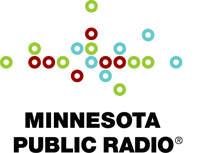You’ll see much on this site about the development of new applications, software, products and systems. We’d also like you to see how Minnesota companies are using them to accomplish their goals.
 Minnesota Public Radio has always endeavored to be a leader in employing new technology in the daily business of radio broadcasting. One look around their beautiful facility in St. Paul will tell you that. From state of the art broadcast equipment to the video presentations throughout the building it’s apparent that MPR embraces technology and innovation.
Minnesota Public Radio has always endeavored to be a leader in employing new technology in the daily business of radio broadcasting. One look around their beautiful facility in St. Paul will tell you that. From state of the art broadcast equipment to the video presentations throughout the building it’s apparent that MPR embraces technology and innovation.
However, MPR isn’t just using new technology to make the lobby look great. There is genuine dedication to improving the listener’s experience whether they are music fans, news junkies or would be residents of Lake Wobegon. In fact, according to Michael Bettison, Director, New Media at MPR, “Our audience is where the power of our medium is going.”
Bettison joined MPR in 2001 after stints with a web development company in New York and worked with the likes of Time Magazine and PBS. His first of order of business was to properly position the information MPR was providing on air, what he terms “legacy content”, on line. Additional attention needed to be paid to correctly orienting the staff to use the assets given to them by broadcast to focus the content online. This also led to web getting “a seat at the editorial table” at MPR,” a place that some companies are still trying to sort out in their overall strategy. In fact, some still see web as a competitor to traditional media. Bettison noted no such trepidation at MPR. “The only concern was that of workload. However, we were able to take advantage of the enthusiasm shown by the staff to address those concerns.”
In the years following Bettison’s arrival many interactive features have been added to the Minnesota Public Radio websites. According to Julia Schrenkler, Interactive Producer, New Media, MPR seeks to provide communication with listeners on three levels; “To, from, and among.” The “to” encompassing the on-air content as well as the information online, the “from” including everything from e-mail to the Public Insight Journalism initiative and the “among” including public forums as well as the Gather.com social network started in 2005. Bettison also notes that one of the operating credos that is at the backbone of the “from” part of the equation is, “Our audience is smarter than we are.” and it has lead to many of the innovations.
So what are some of these innovations used by MPR and American Public Media that have been most successful? Clearly, the aforementioned Public Insight Journalism social application is a strong example of using social media concepts, if not breakthrough technology. The Idea Generator application, developed in conjunction with Ham in the Fridge of Minneapolis has also proven a successful application in seeking input from the listeners of MPR.
Bettison points specifically to the Select-a-Candidate application…he’s hesitant to call it a widget. It was developed for MPR and has become a “lightly branded quiz application that is available and embeddable to anyone.” Though it may sound grandiose Bettison says its development was inspired by the premise that an informed citizenry is the foundation of a strong democracy. In fact, the tool was viewed as important enough that its development was funded by a grant from the Corporation for Public Broadcasting.
The podcasting arena has also proven very successful with 4 podcasts being noted in the iTunes Top 100 list including broadcast staples Marketplace and Prairie Home Companion as well as two that are web exclusive; Grammar Grater and The Current Song of the Day.
For many companies the success of adopting these innovations is judged on their return on investment in financial terms. While MPR’s online initiatives could generate dollars separately from its broadcast content, which is regulated by the FCC, they have yet to aggressively pursue interactive as a separate revenue stream. They have chosen to focus on the value proposition established by their on-air product meaning little to no advertising and a desire to judge their investment on the furtherance of its mission.
What’s next for MPR in the interactive space? Bettison points to more podcast growth noting that their “outrageous success” counts for a third of all content impressions. They’ll also look for ways to expand their video offerings as well as a moving into mobile. “We won’t chase the technology.” says Bettison, “But we’ll always look for ways to provide a better ‘public service’ experience.”